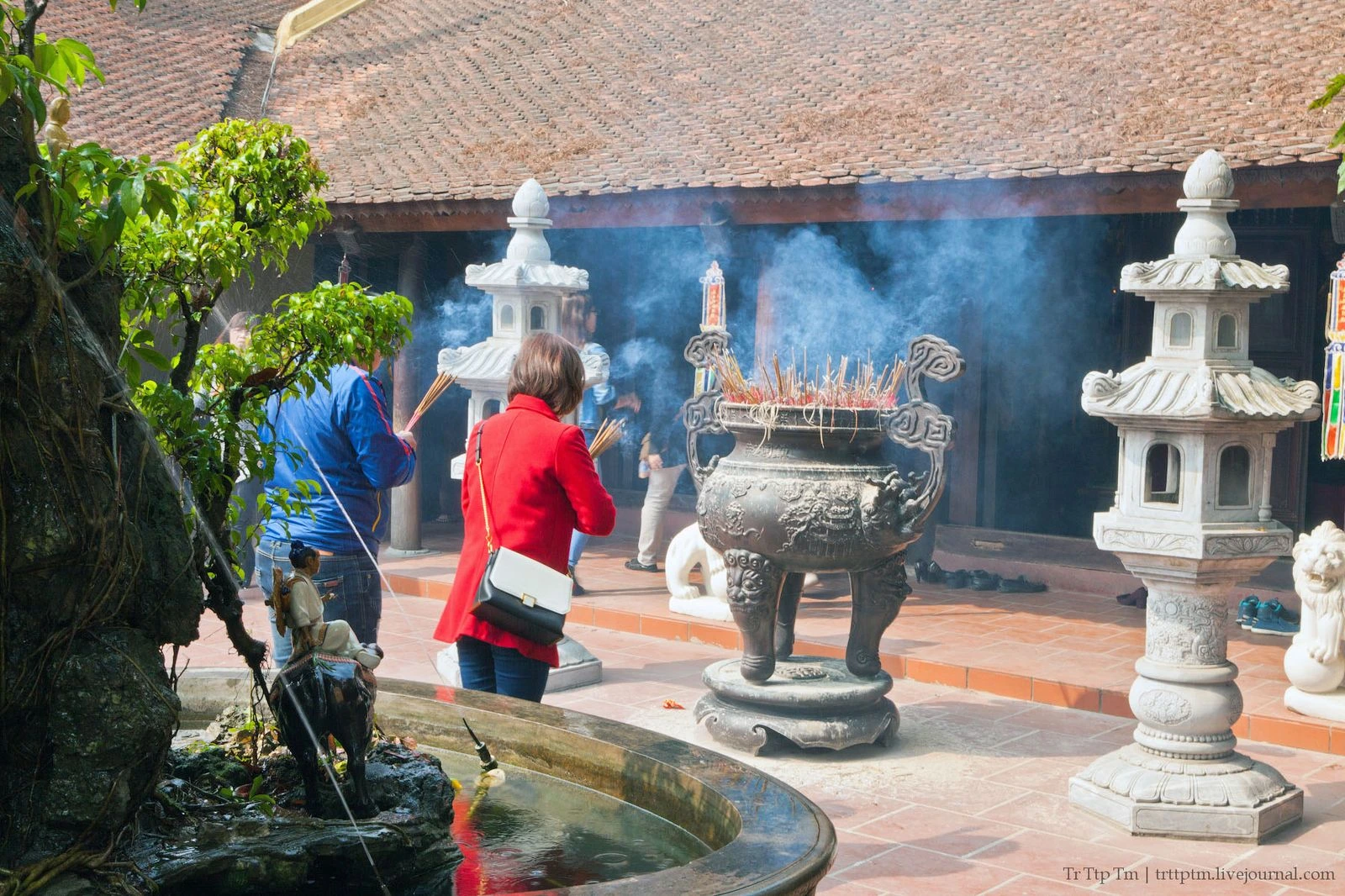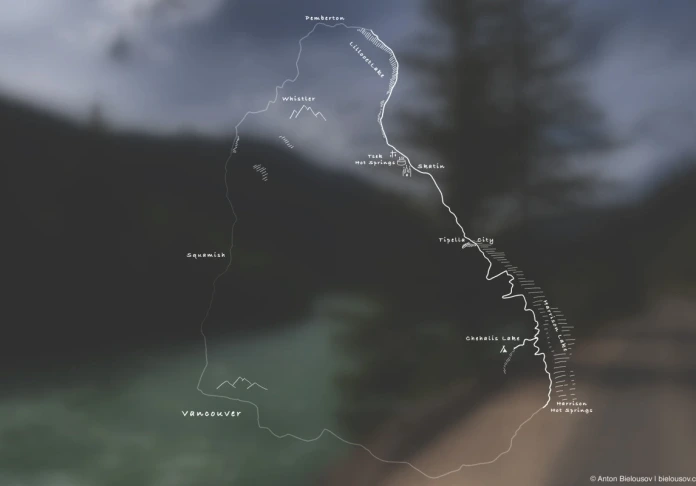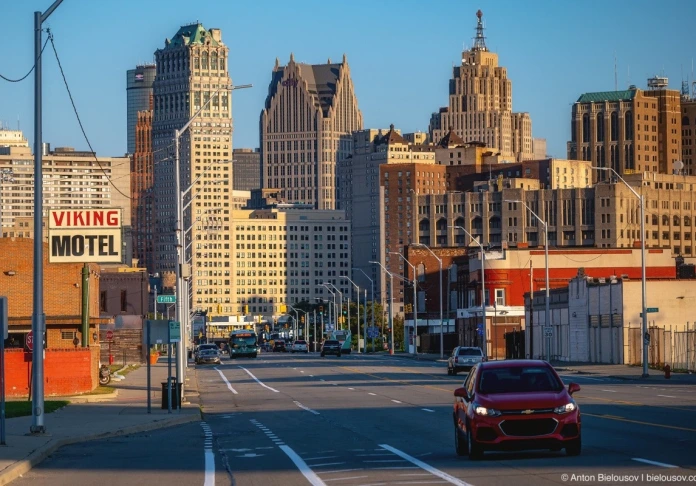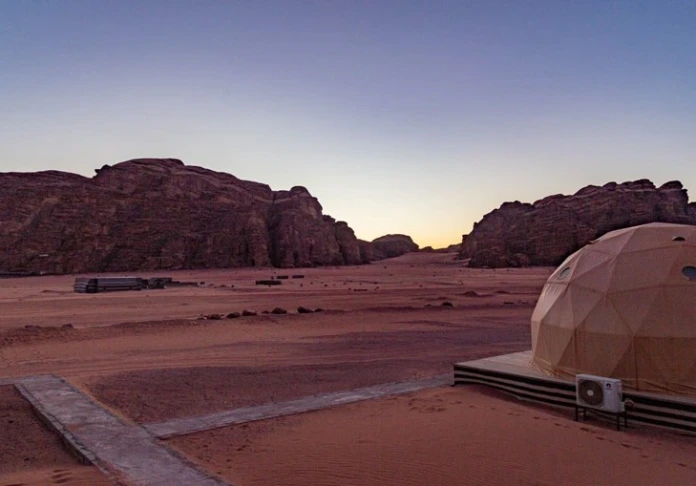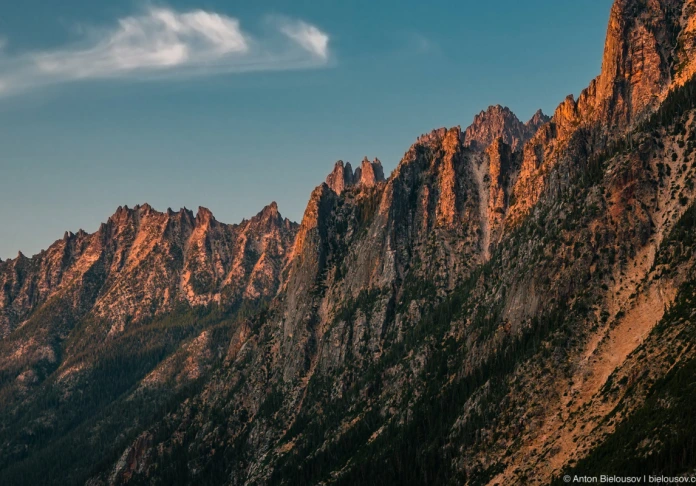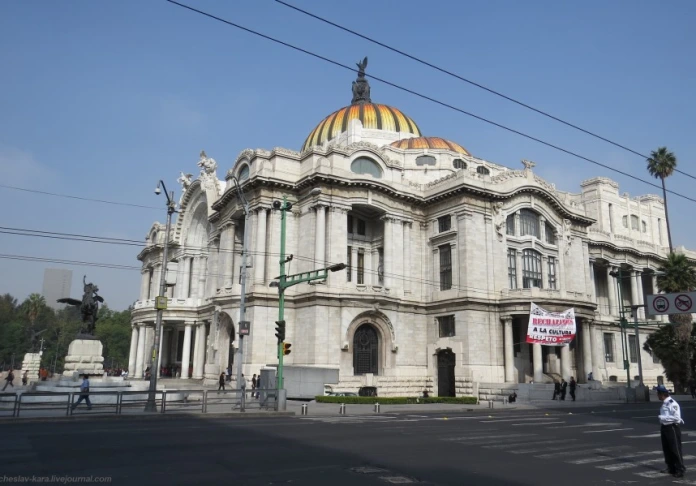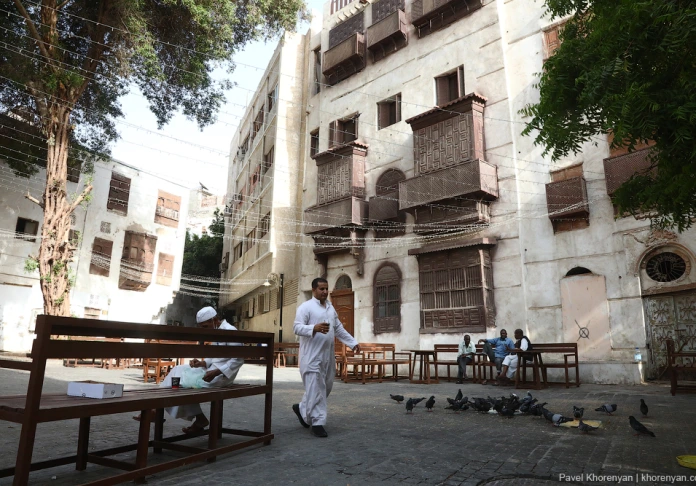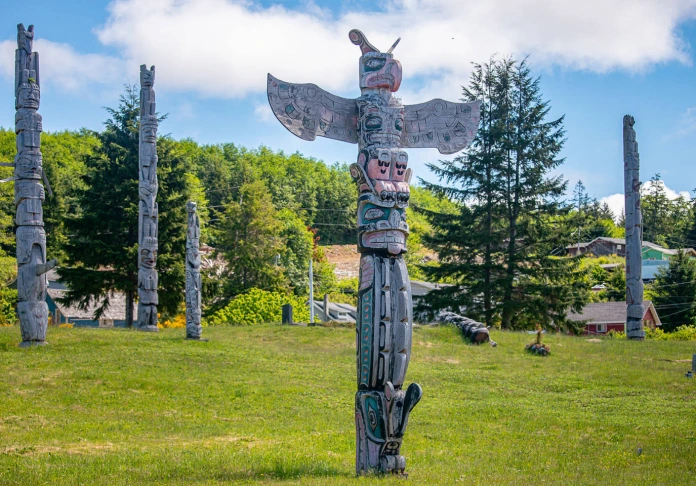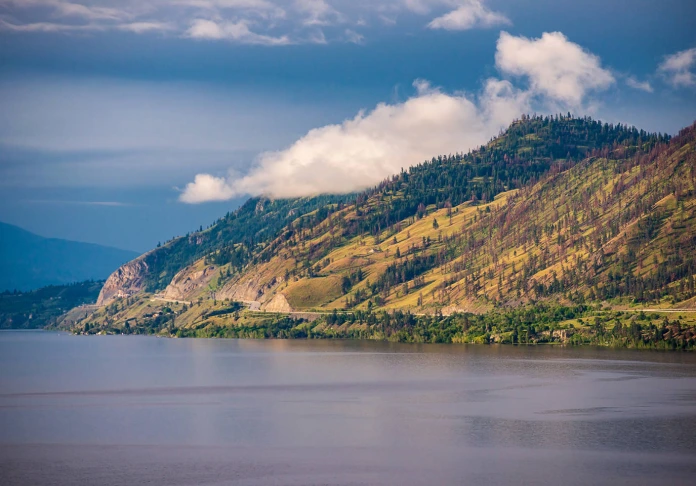City of Red River
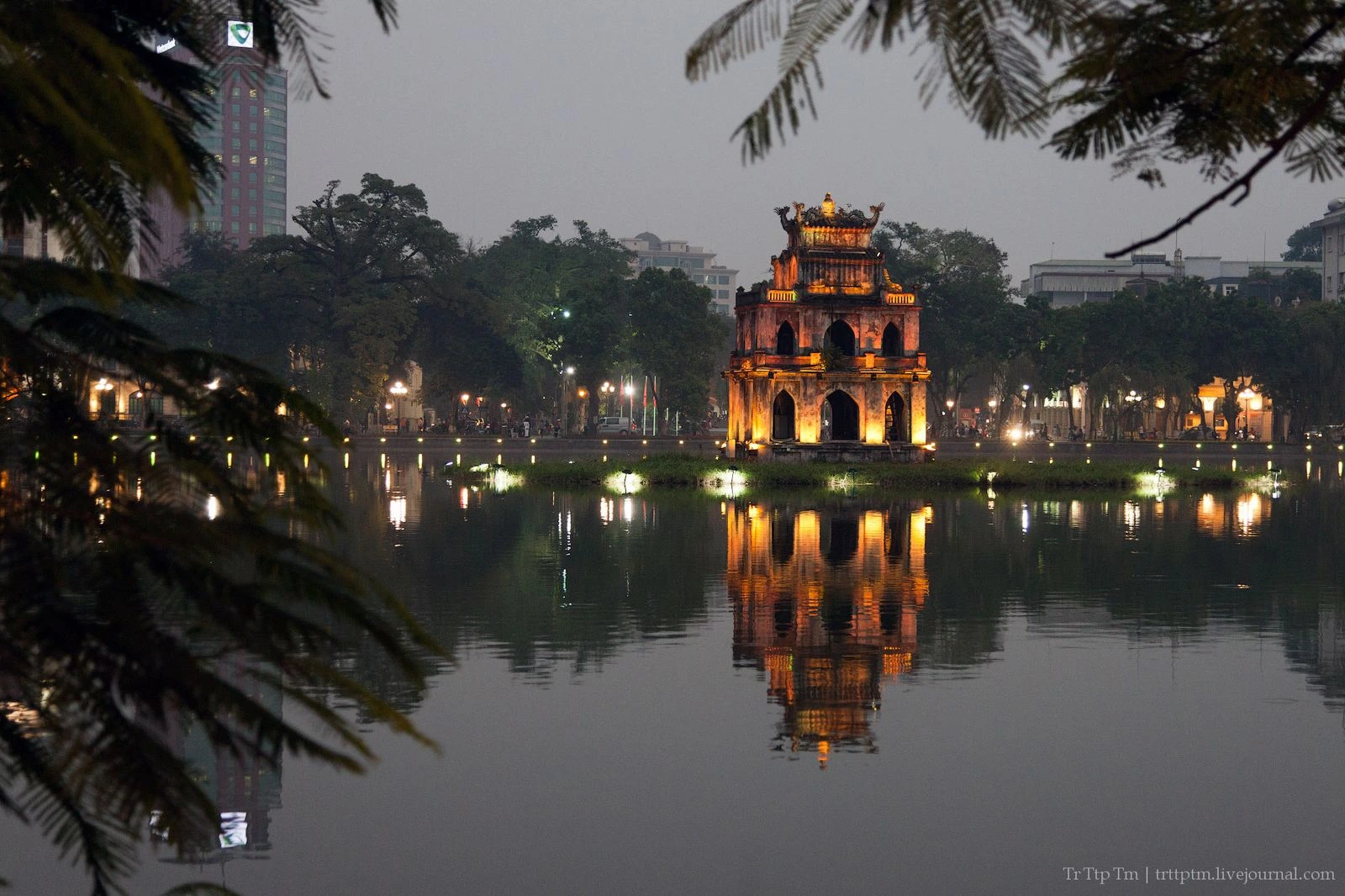
More than a thousand years ago on the banks of the Red River there was the capital of Vietnam. It grew out of several villages and the town of Dajla at the behest of King Li Thai To. Legend has it that the place to build the indicated celestial sign, the king fancied dragon among the clouds. In honor of this city and named - Dragon soars, Thang Long. Years passed, and with it the city changed names Dorgdo, Dongkuan, Dongkin, Chungdo again Thang Long before the beginning of the last century, he did not "city among the rivers" - Hanoi.
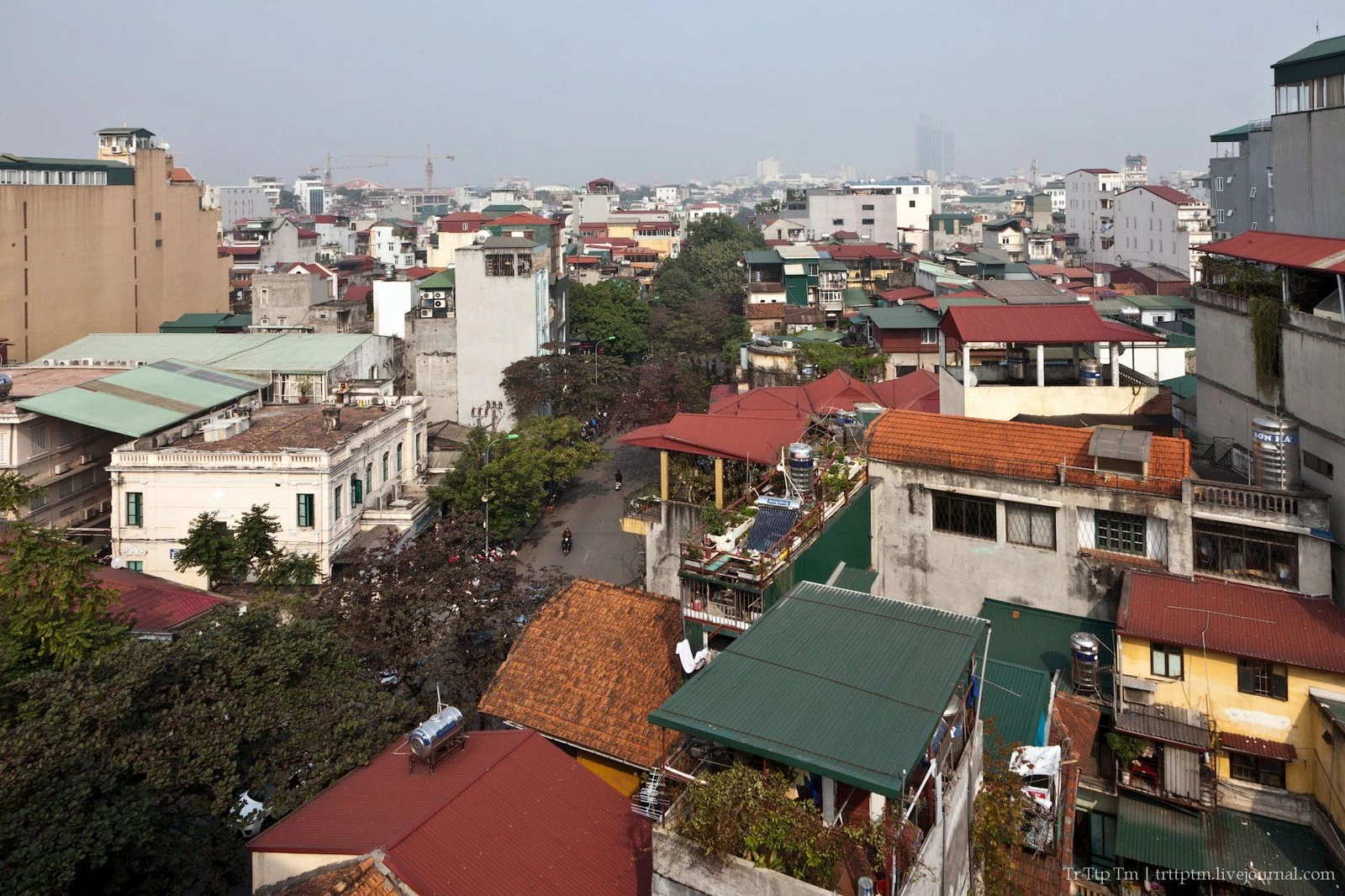
Legend legendary, sign sign, but the choice of location for the center of their possessions Lee Thay do something completely pragmatic. Chronicles Dayveta reported: "Dai La City is located in the center of the space separating heaven and earth, he has the power of a tiger ready to pounce, and the power of the dragon, curled up in the ring. Its location to the exact north-south, east-west. It is well located with respect to rivers and mountains. These lands are broad and smooth. The terrain is high and the available wind. The people spared the exhausting confrontation with the terrible elements, and extraordinary wildlife is rich and diverse. Vetskogo carefully examine the limits of the kingdom, one must admit that it is - the king -earth to which really like the spokes to the hub, and people rush that is created to be the capital of the sovereign rulers and the rulers of all generations to come. "
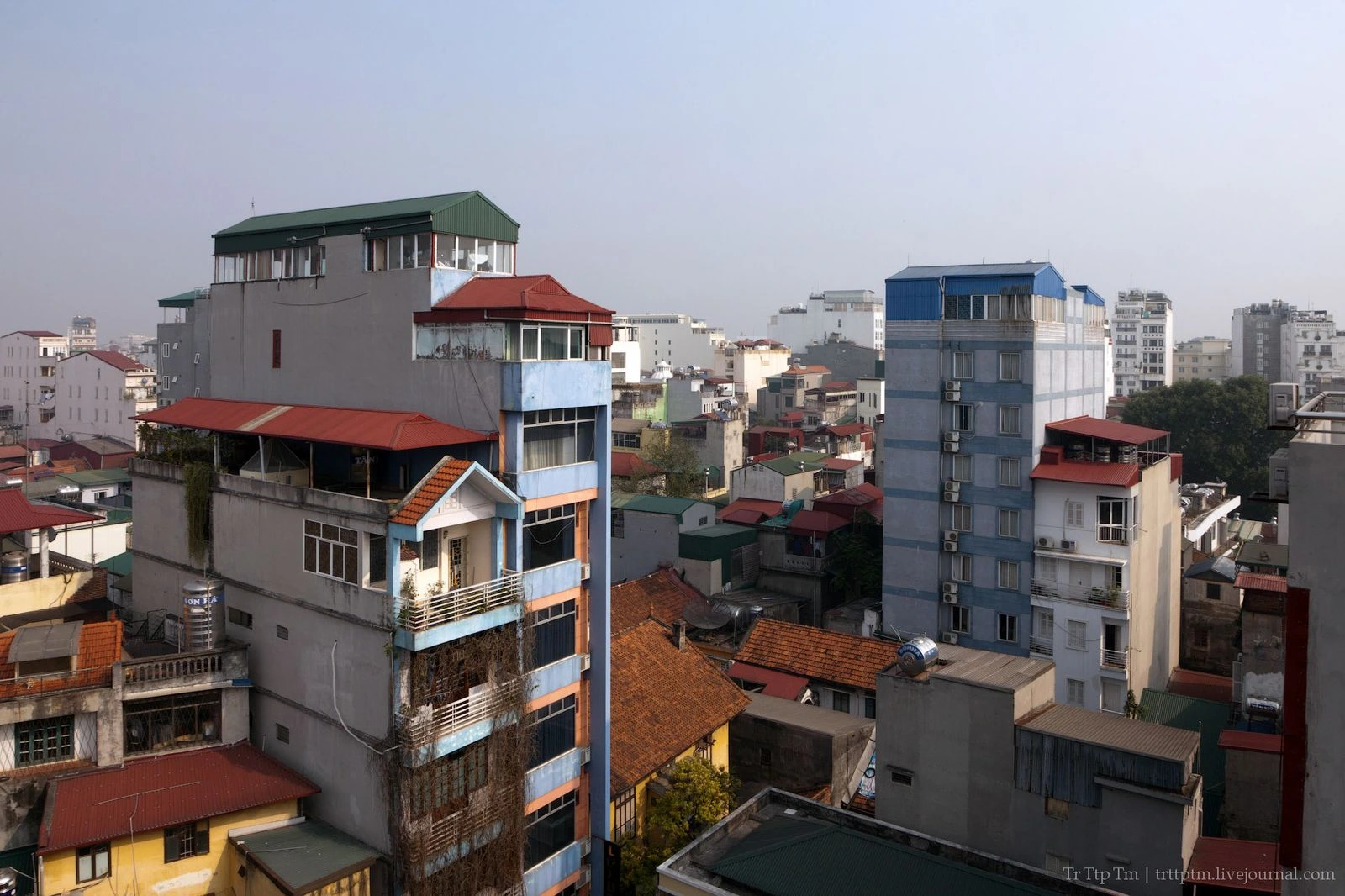
Center Hanoi today is narrow winding streets, the top web of intertwined wires.
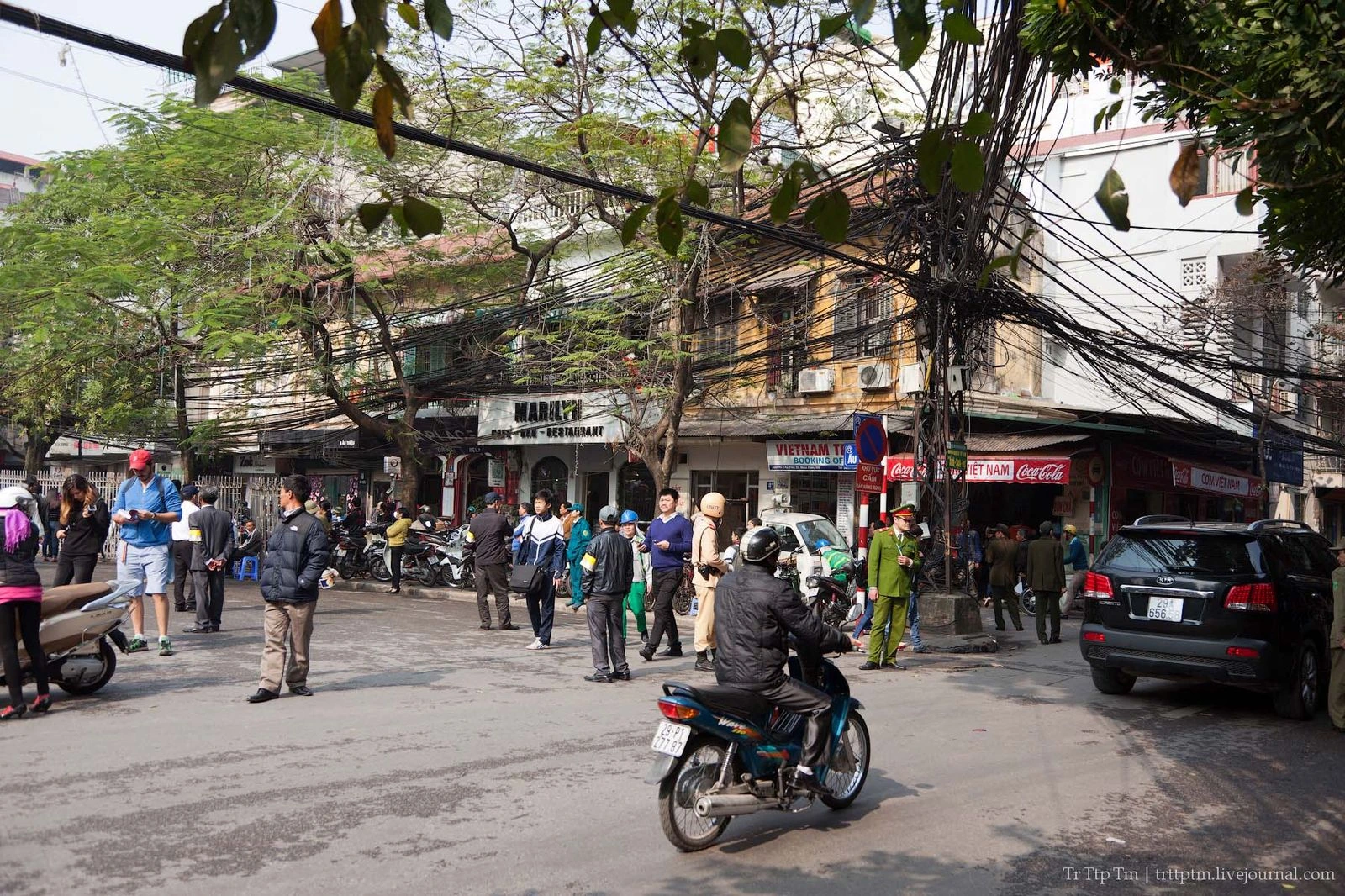
True or not, but they say that the damage in these intricacies of cable do not even try to look for, but just throw a new wire if something went wrong.
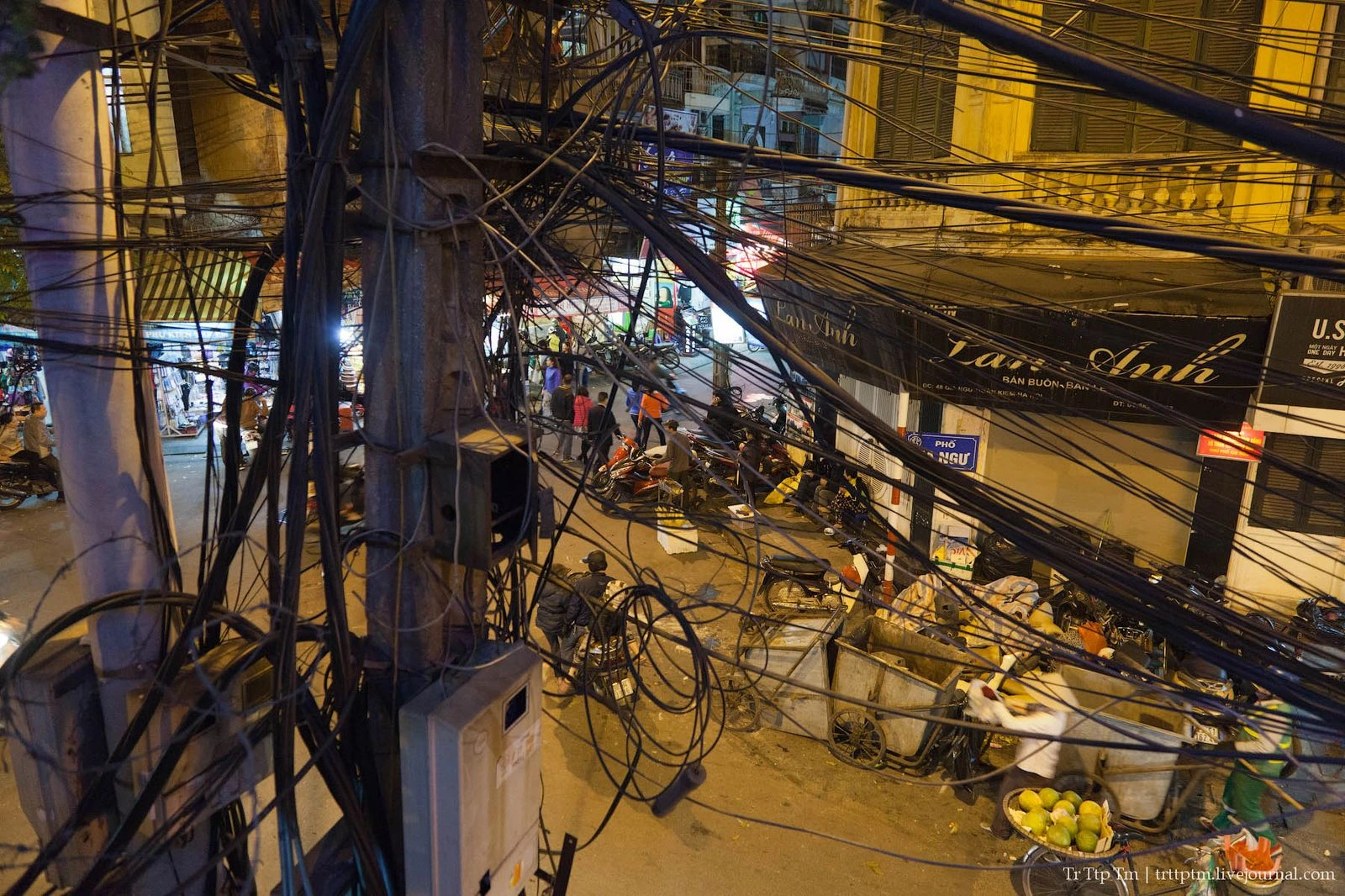
The Old Quarter is also called "Thirty-six streets."
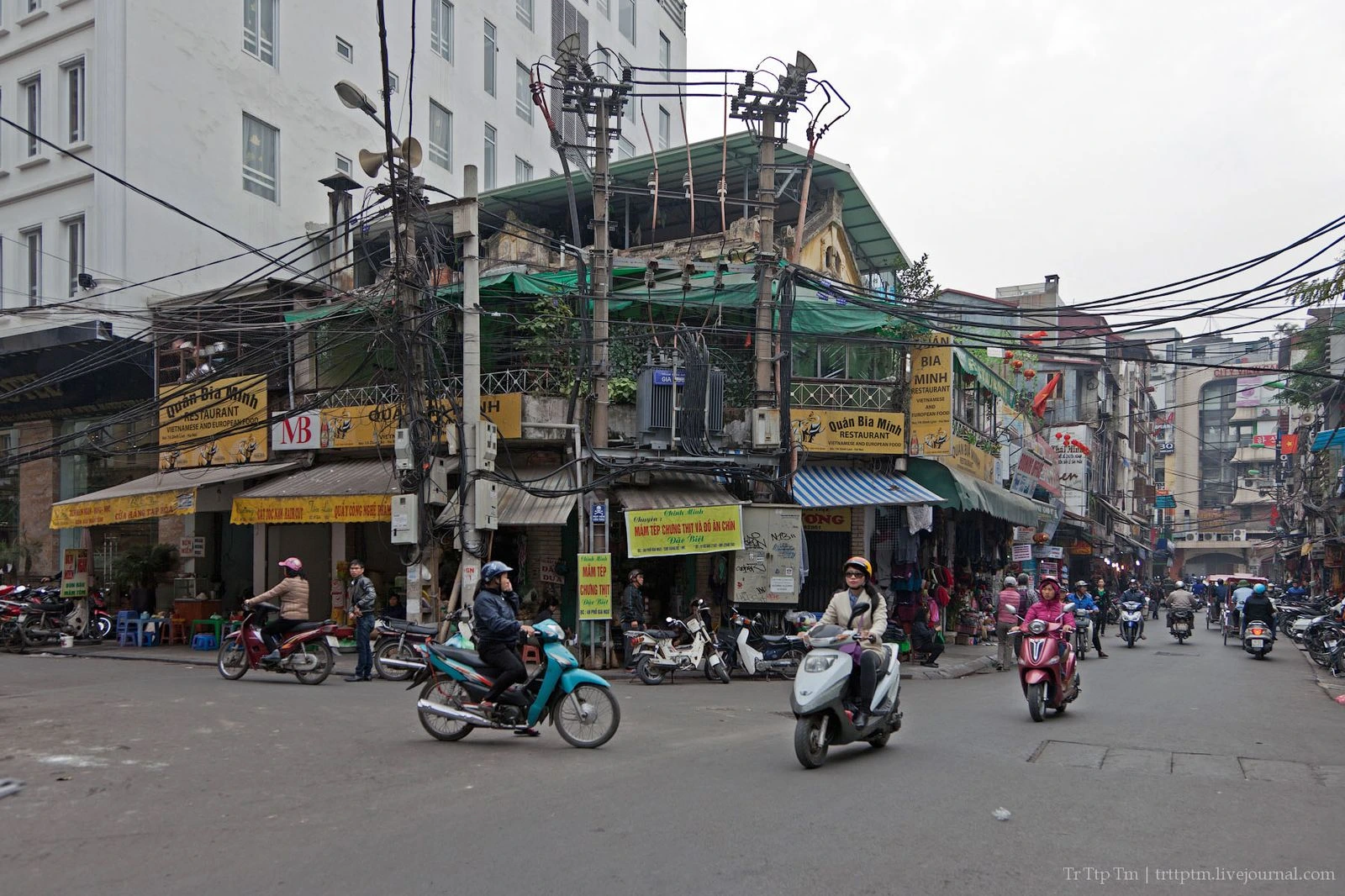
Quarter arose on the site of a water market that existed here in ancient times in the ducts of the Red River. Over time, the river separated the dam, drained the ducts and ducts on the site began to settle craftsmen and traders.
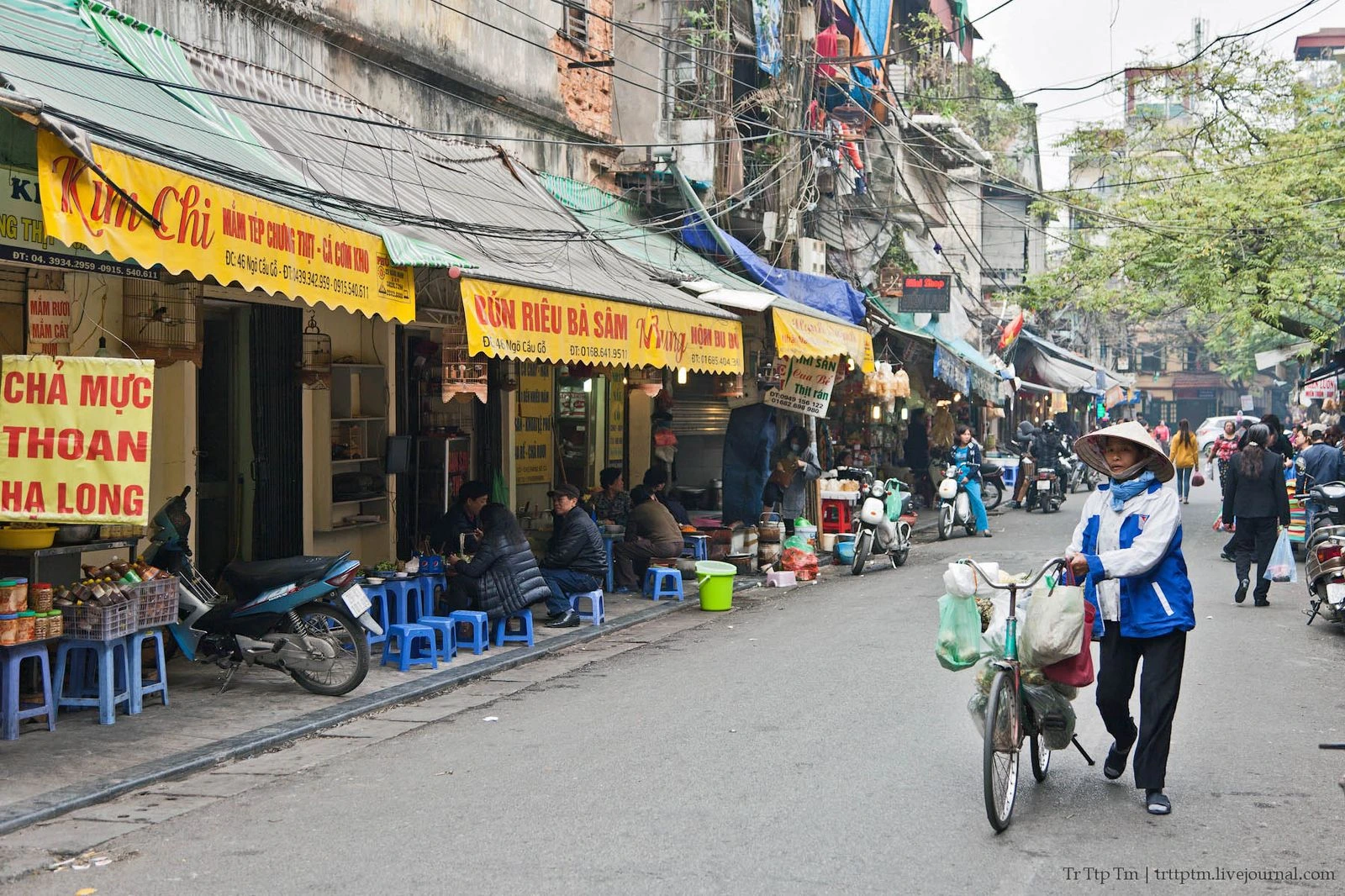
It is believed that the quarter is named after the number of craft guilds. Every street in it belonged to a guild. Their names speak for themselves: Paper - Fohangma, Silver - Fohangbak, Tin - Fohangsiek, Silk - Fohanggay and so on. But now the guilds no longer in sight, the streets much more than thirty-six, but each of them has retained a certain specialization.
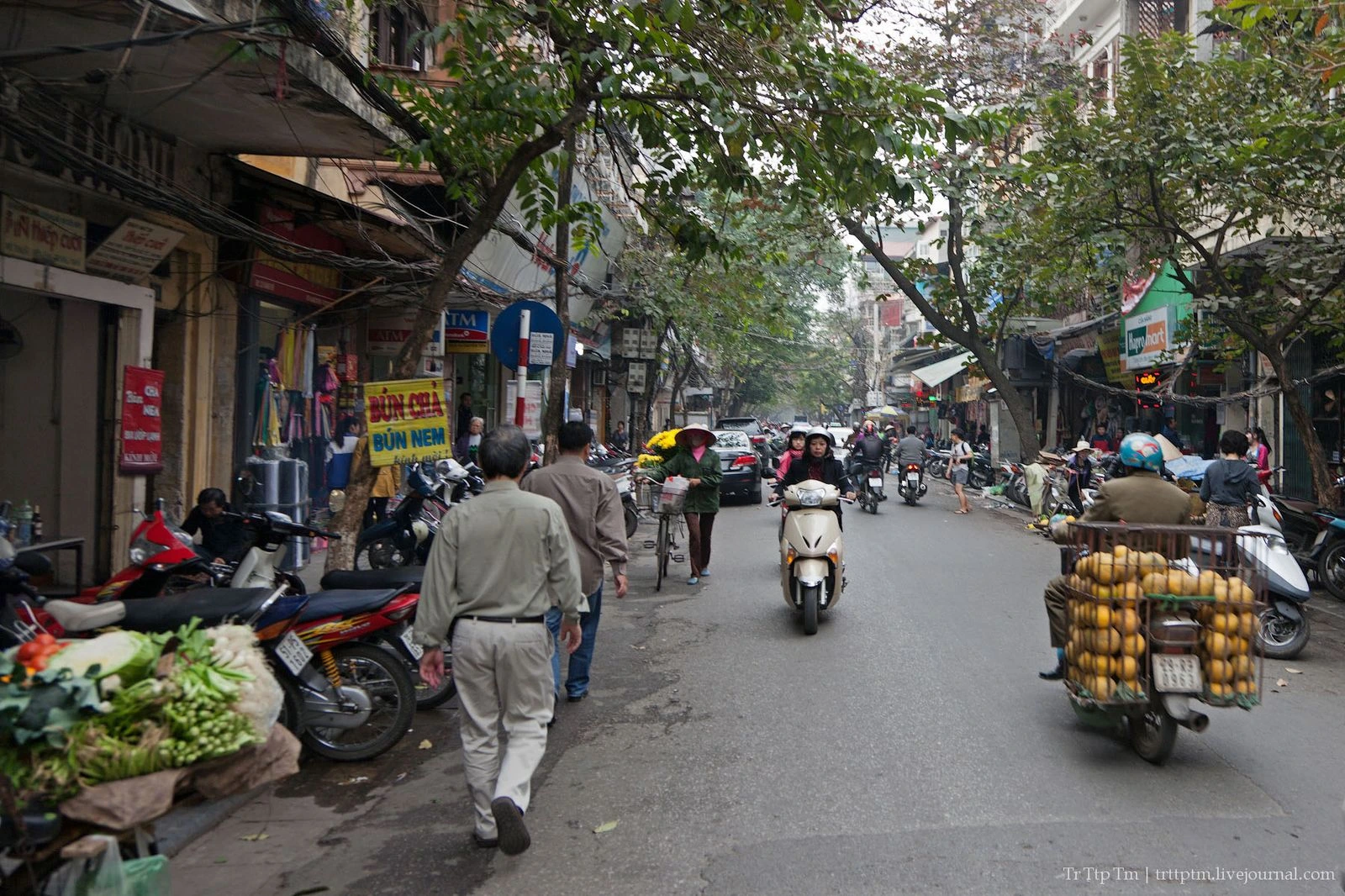
At one point traded products of metal, other paper and cardboard, a third electronically in the tissues of the fourth, fifth toys in the sixth cut stamps ...
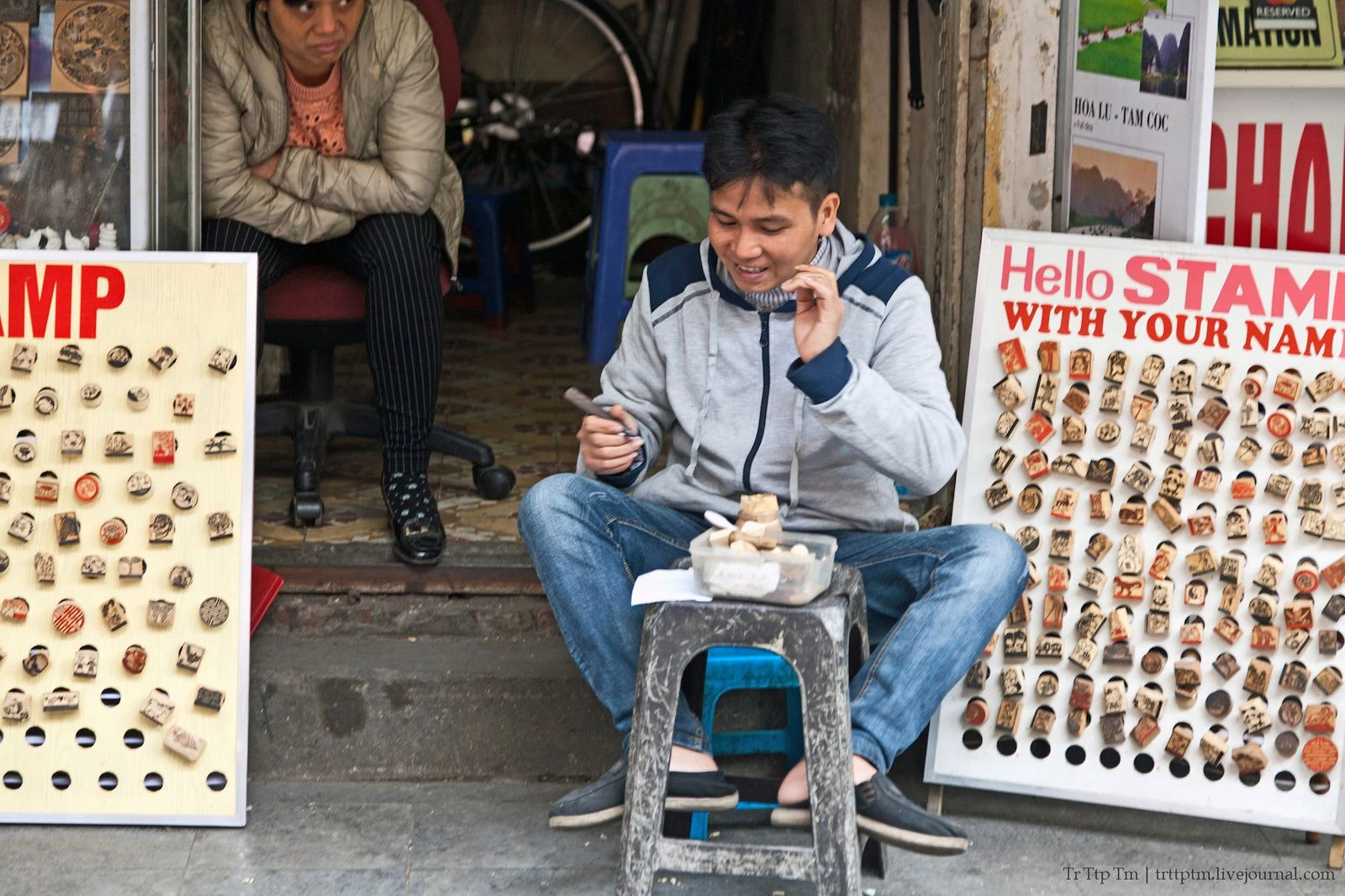
And, of course, sell all sorts of things with it, scooters and bicycles.
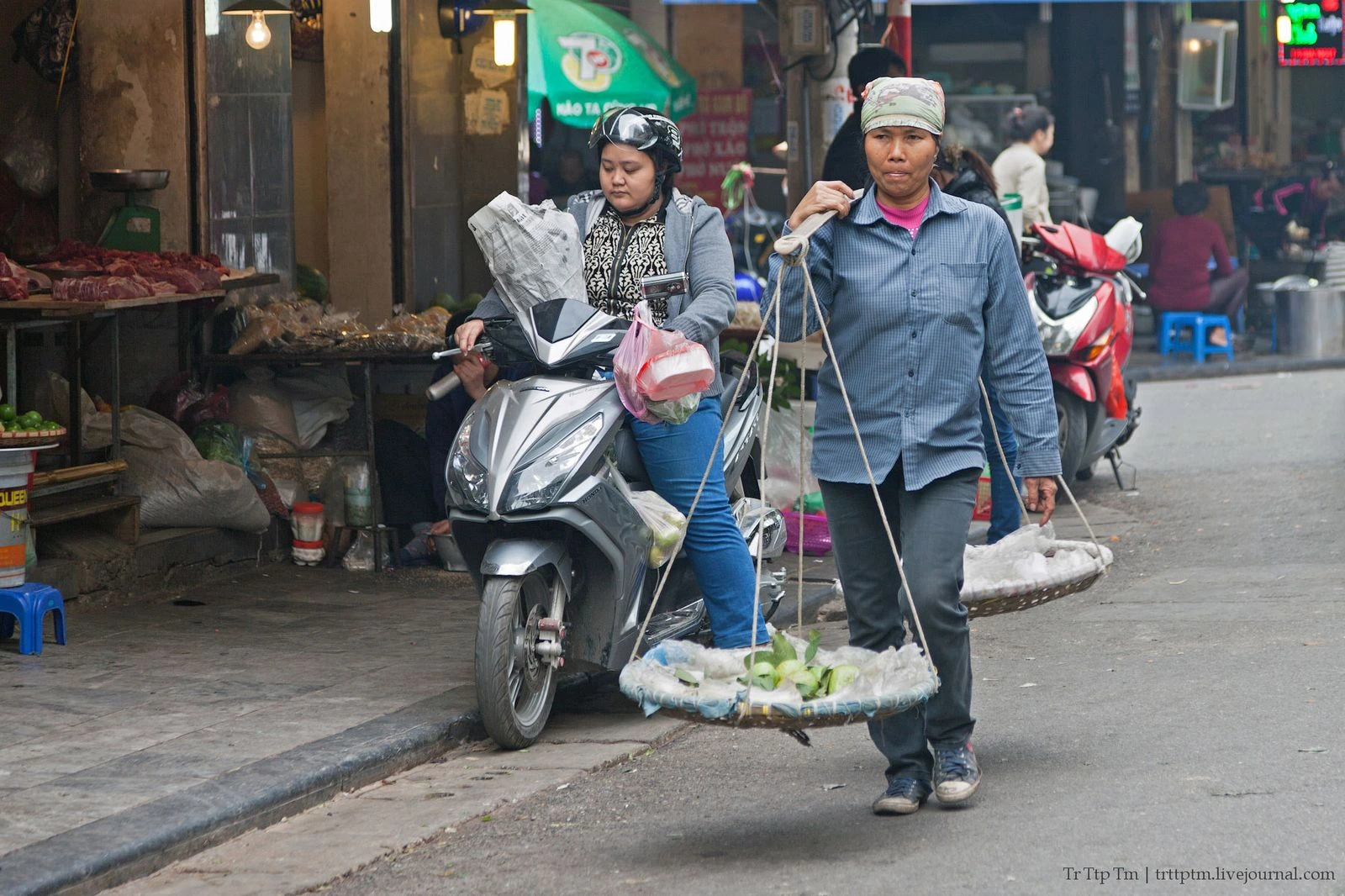
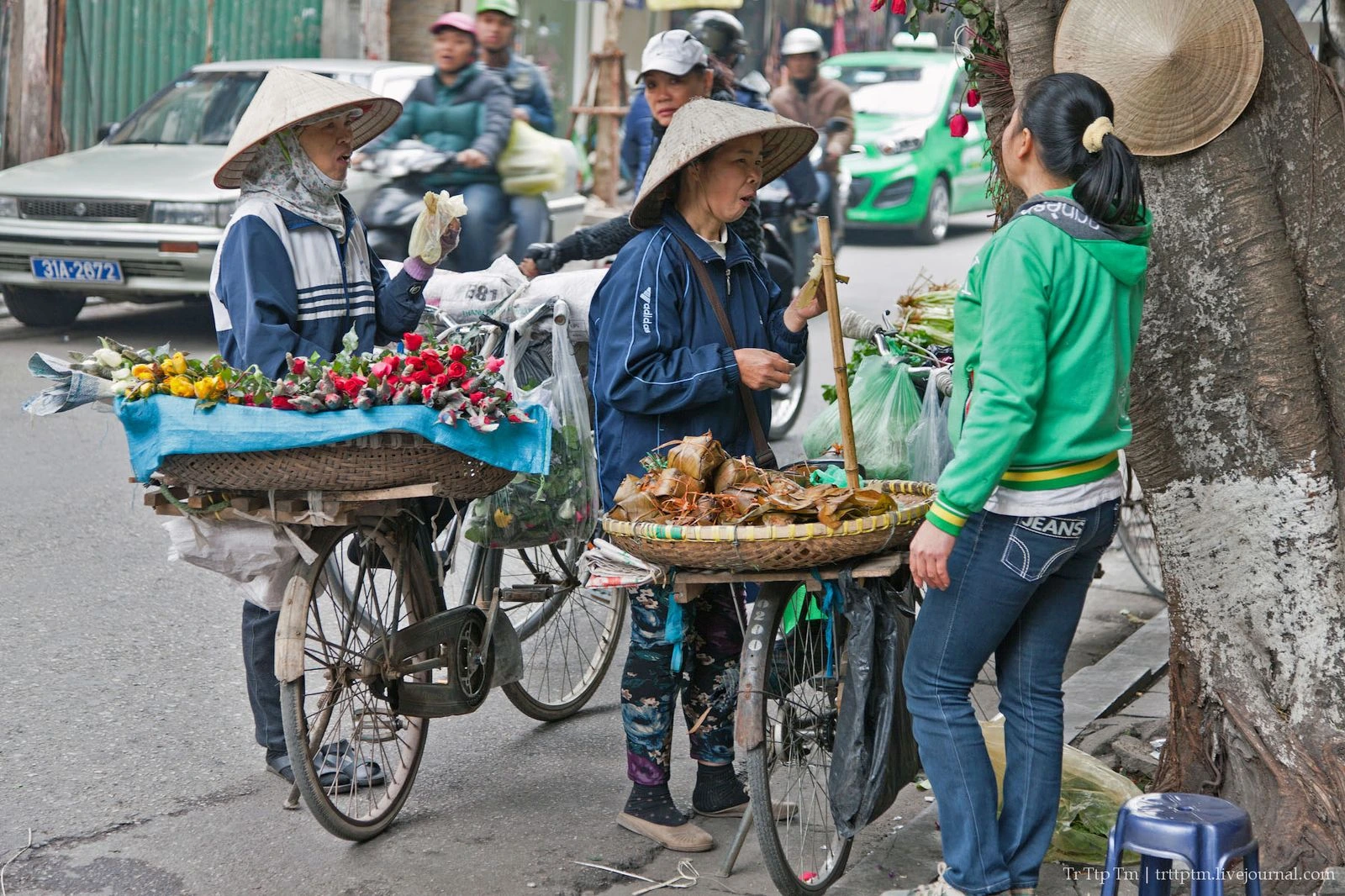
Today, trading on the thirty-six streets strongly pushed hotels and cafes. Kitchen cafe often not provided, prepared right in front of passers-by.
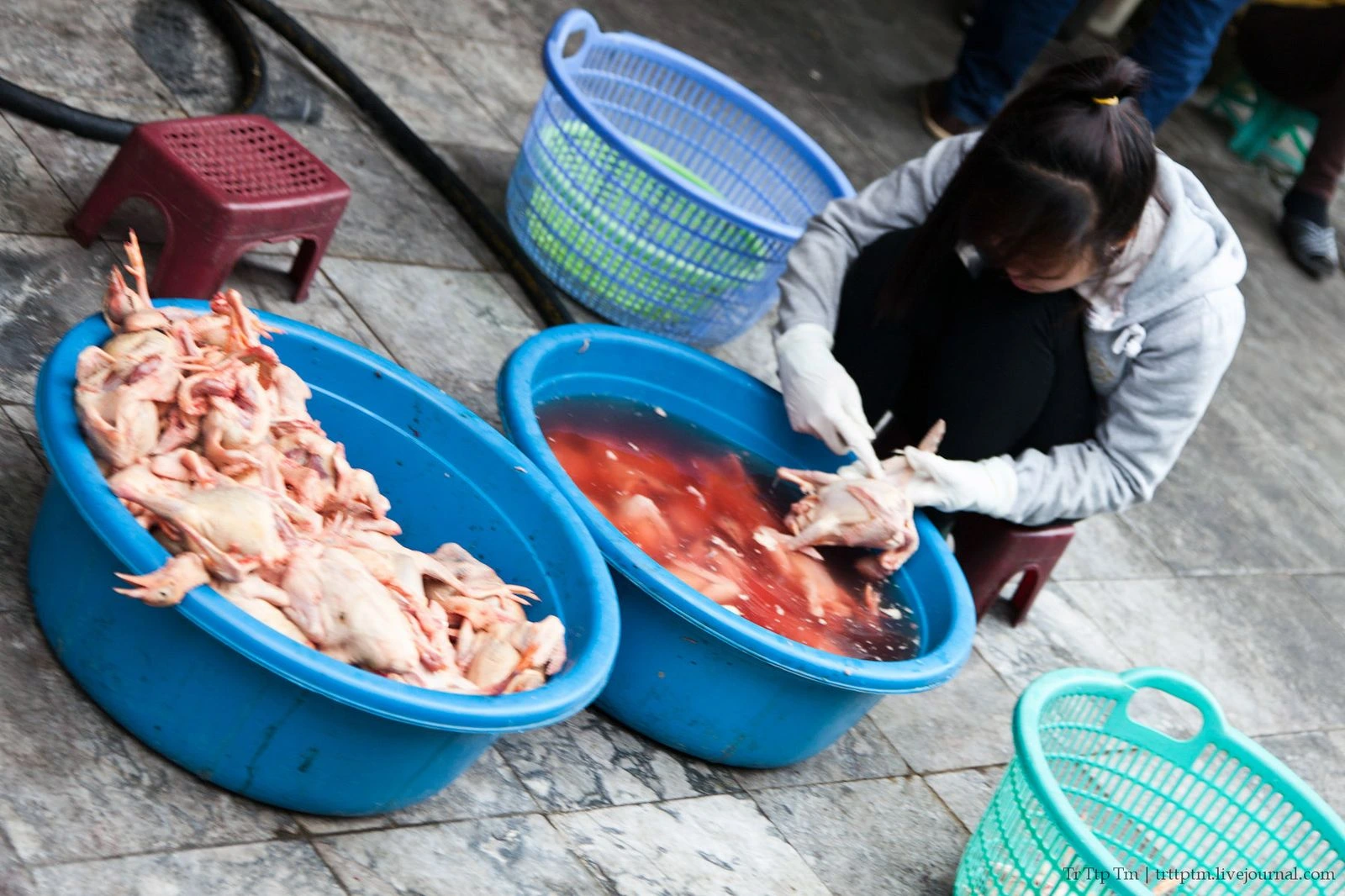
Decent time owned French Indochina, noting in Hanoi, erecting on the edge of the old quarter of the Cathedral of St. Joseph.
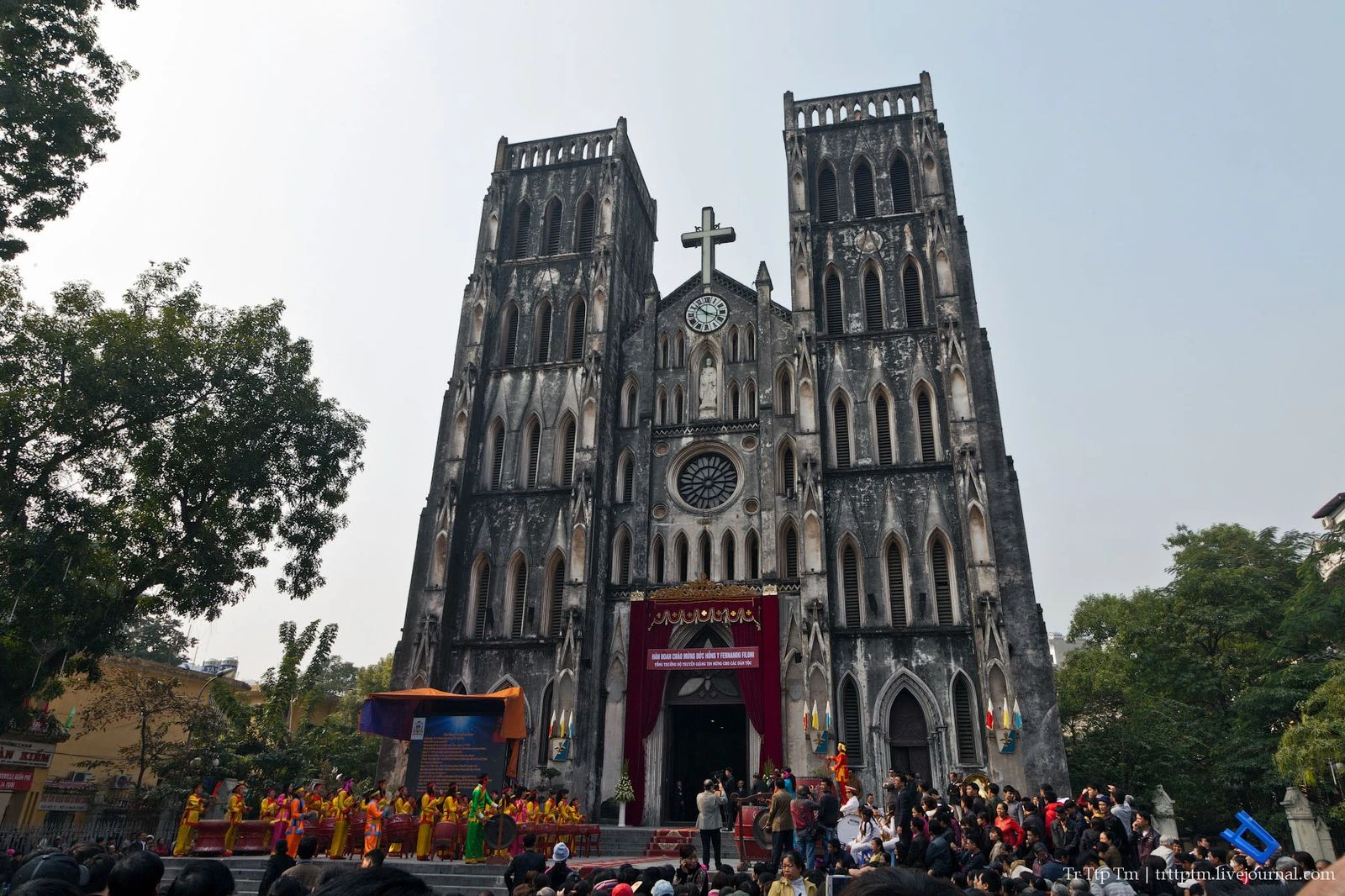
From the southeast to the old quarter looms lakeside returned sword - Hoan Kiem. All residents of Hanoi know the legend of the lake, which brings us back to the Lee Thai To. Noble was a historical figure in Vietnam. So, in those days, when Lee Thay It was not yet king, but simply a landowner and was named Le Loi, the country was invaded by the Chinese. Le Loi gathered people revolted, it gradually engulfed the whole of Vietnam, and the Chinese were expelled. Triumphant became King Le Loi Thai Lee What rules wisely and quickly led the country in order. Legend has it that the enemies he defeated not by himself, but with the help of a magical sword - the gift of a golden turtle. Having sword, Le Loi acquired due to many soldiers and Raziel without a miss. After the victory, he made a feast on the lake, where there lived a tortoise. The boat Le Loi and his entourage came to light in the middle of the lake, when the nose of the boat ruler appeared old turtle and said, "You, Le Loi, was sent to the sword to defeat the enemy. Your duty is made, you have won. Sword of the invaders just terrible, and now we will return it to me. " Sword described a semi-circle above the water, the turtle caught him in the mouth and plunged into the deep. The lake has two islands, one of which is crowned by a tower Turtle, another busy Temple of the Jade Mountain. Bridge leads to the temple of the Rising Sun.
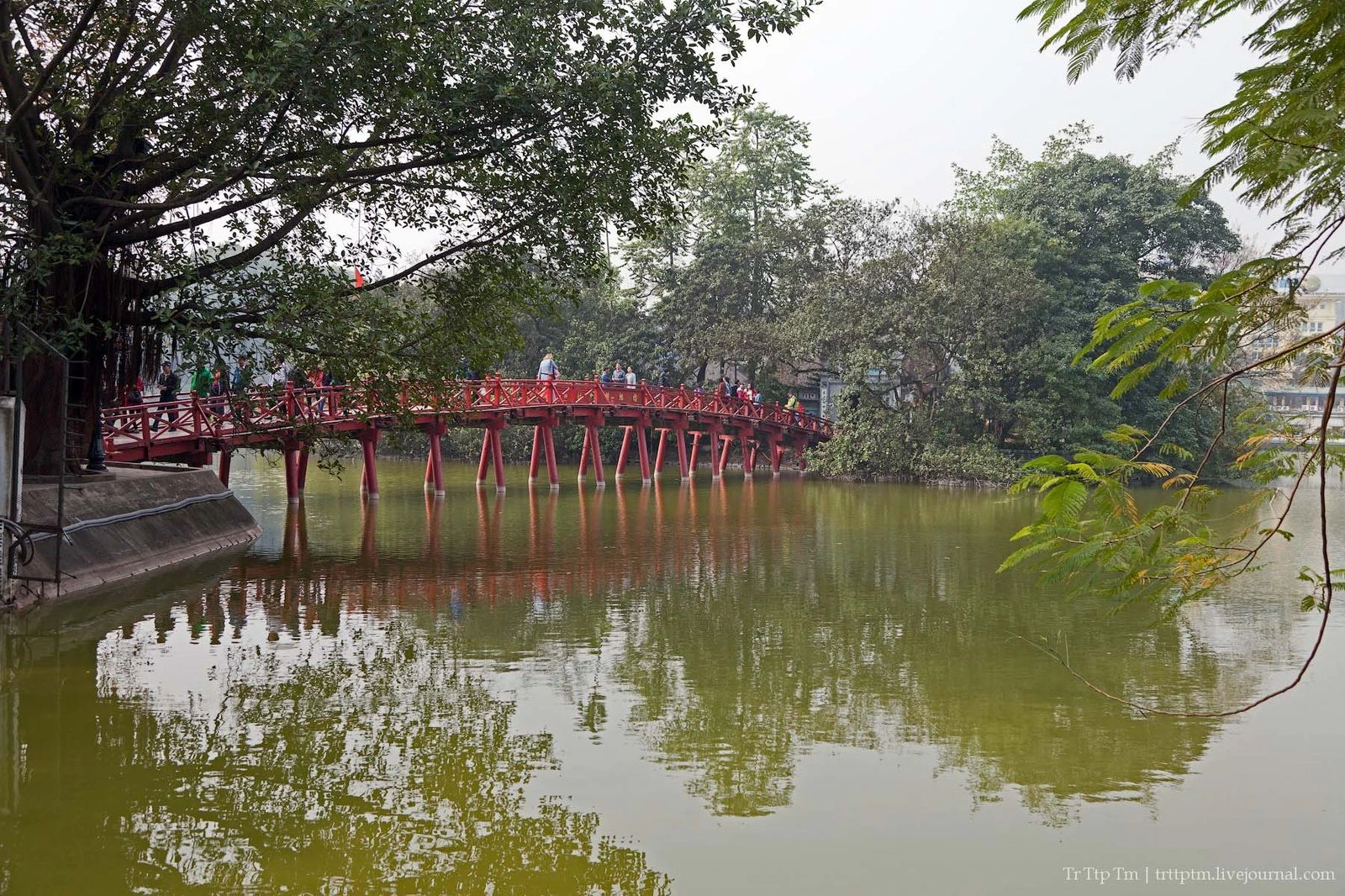
From ancient city walls of Hanoi now have only the gate Kuanchiong.
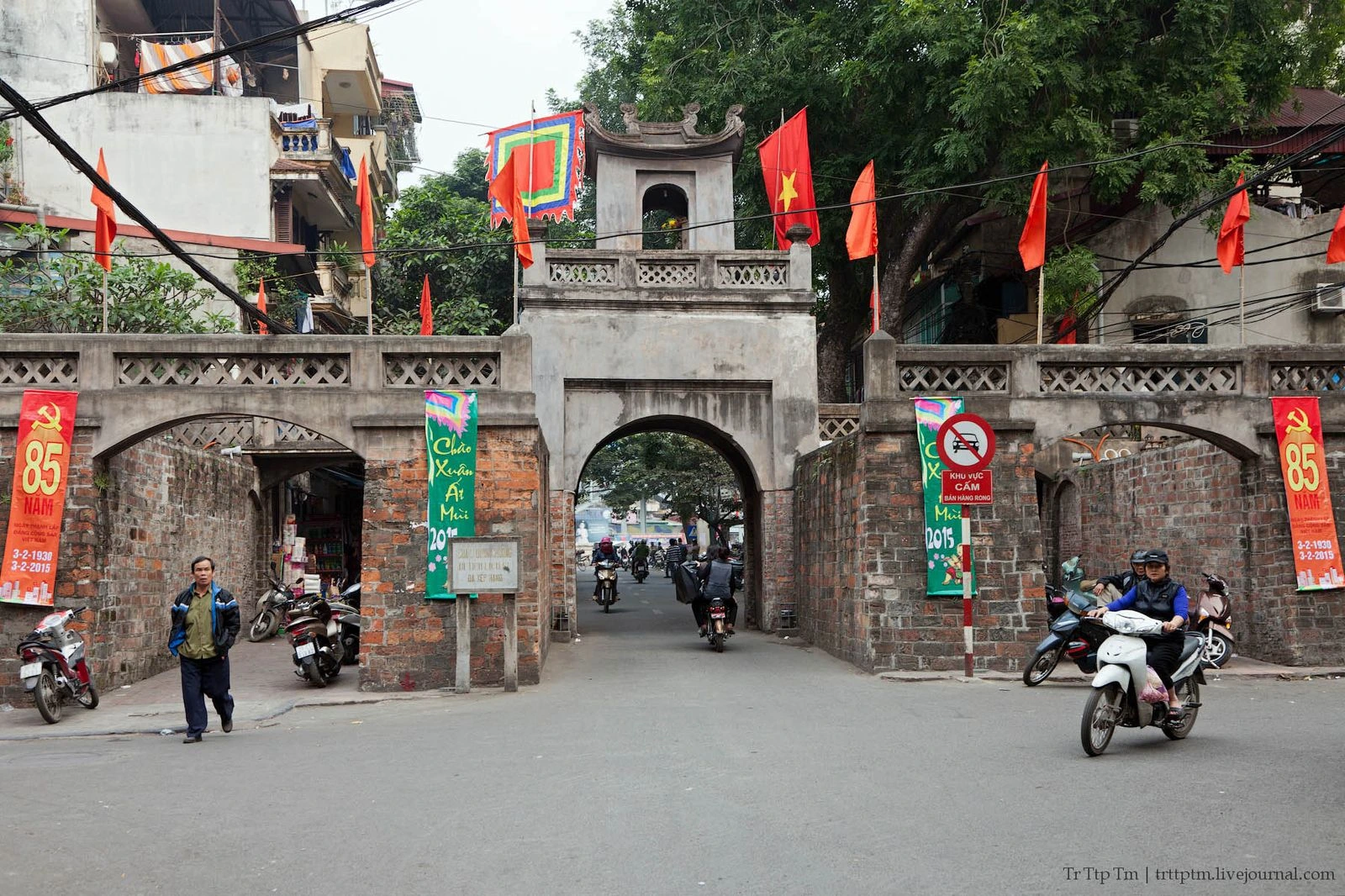
To the east, the old quarter is outlined existing railway line.
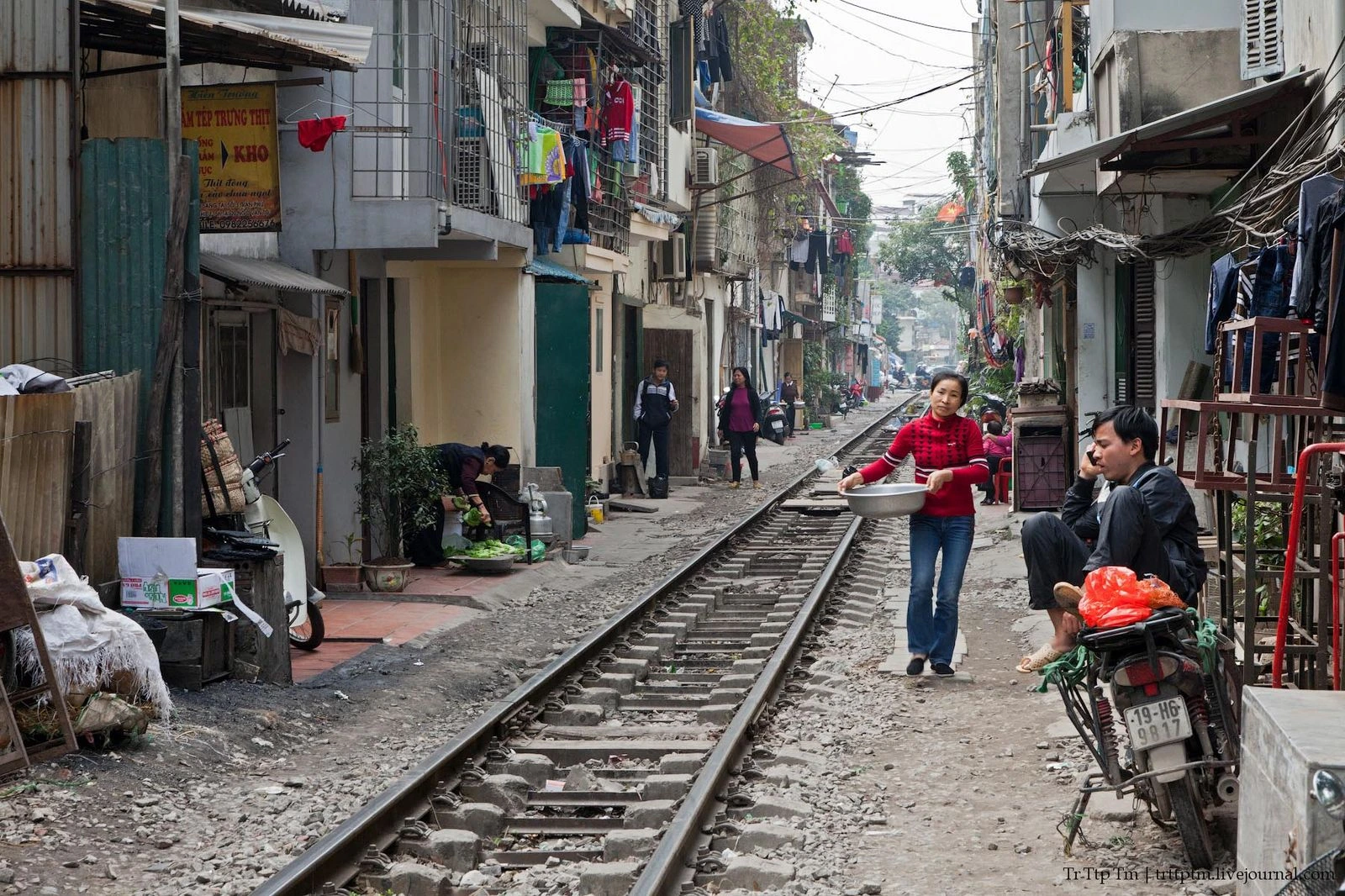
The railroad runs right between the houses, the distance between which is only slightly wider than the dimensions of the car.
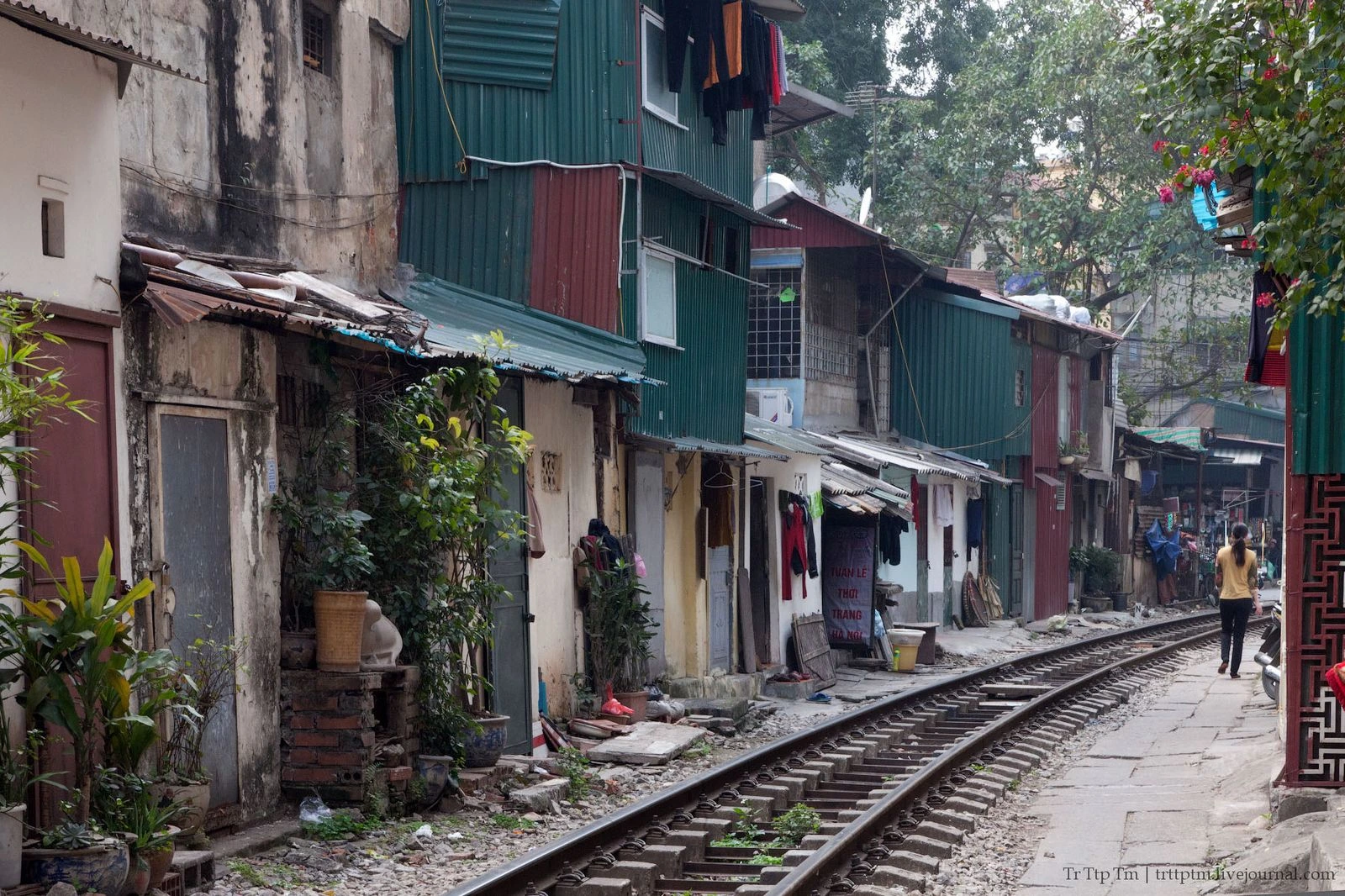
The inhabitants of the quarter is known not too tight timetable, and as soon as the composition passes, life continues on rails, just like on any other Hanoi street.
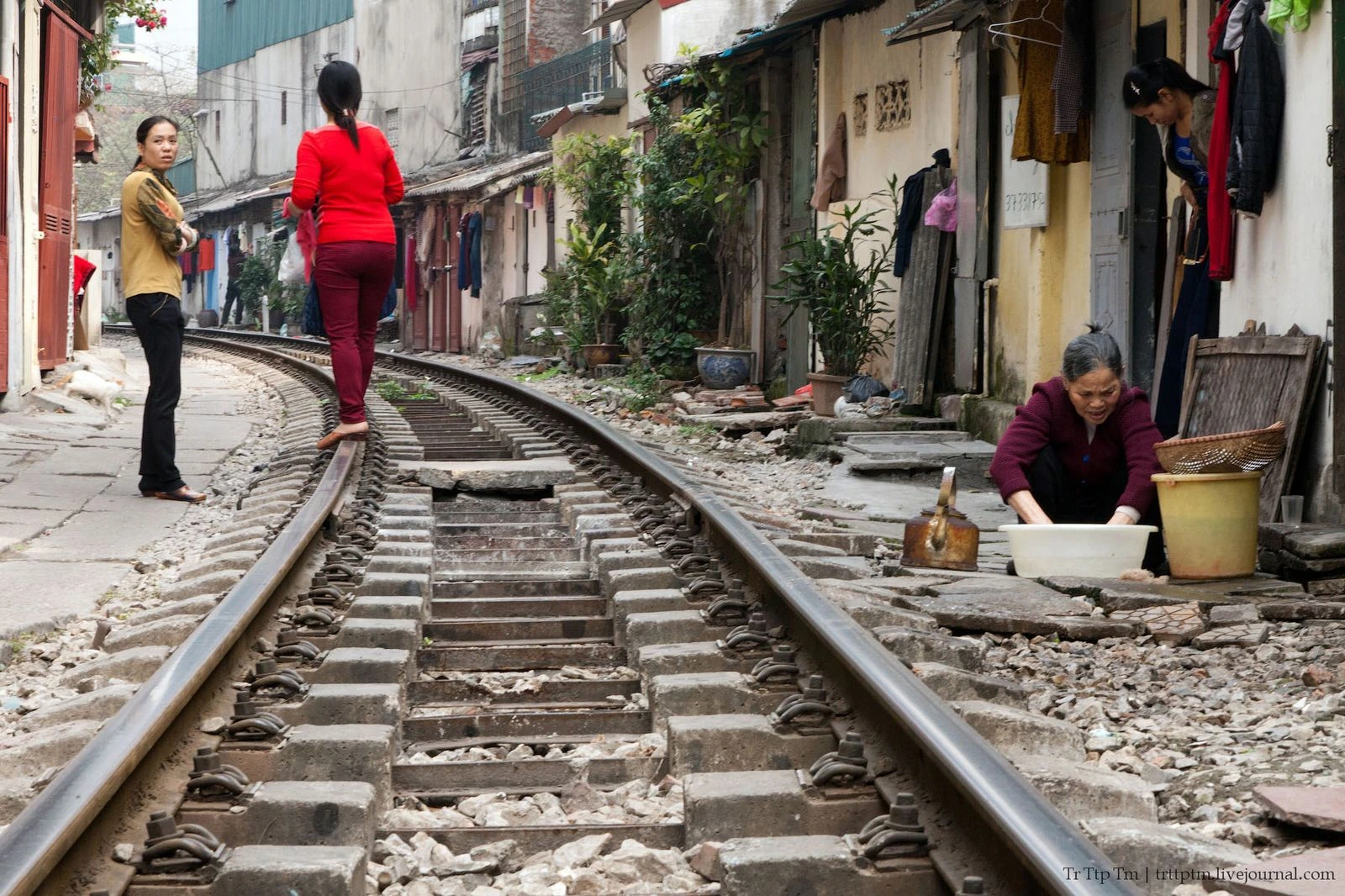
Crossing railroad, get in Ba Dinh - an area of embassies and government buildings. Here are the remains of the citadel of Hanoi.
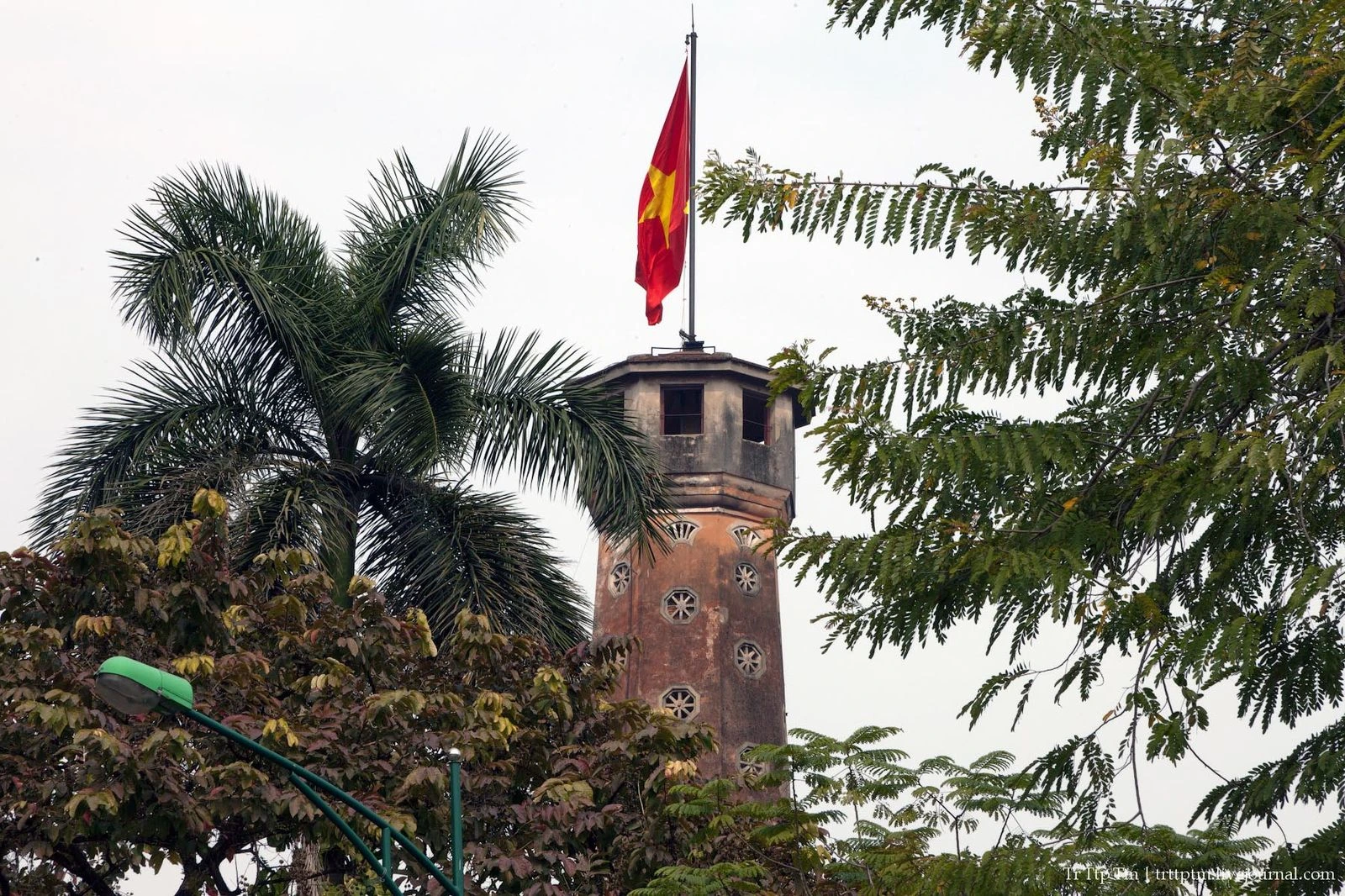
On the banner of the tower looks down from the pedestal strictly Vladimir Ilyich Le Ning.
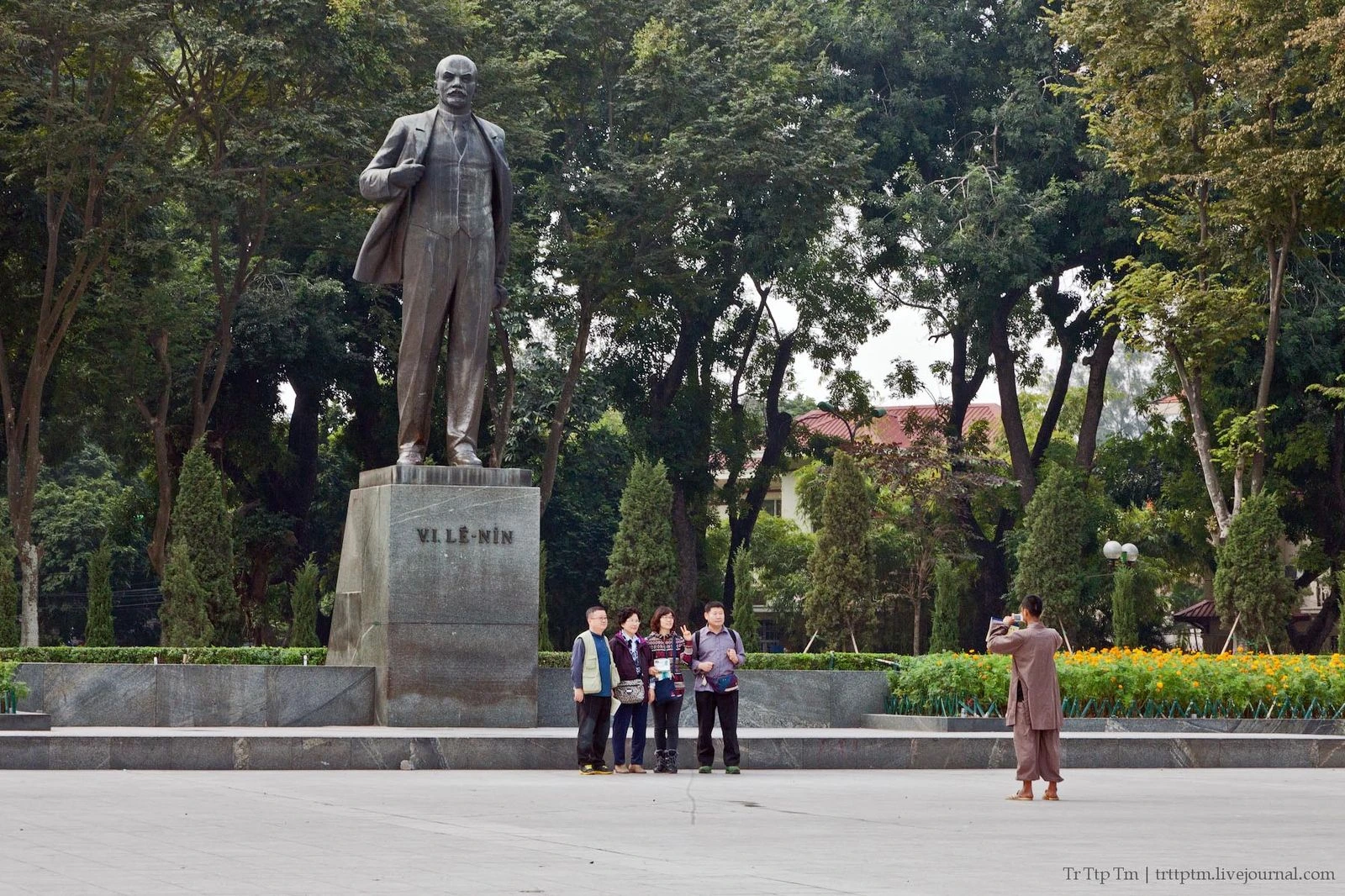
And lies near Uncle Ho, as well as leader of the world proletariat buried themselves without too much pomp, and as Vladimir Ilyich was forced to lead a troubled life beyond the grave in the mausoleum.
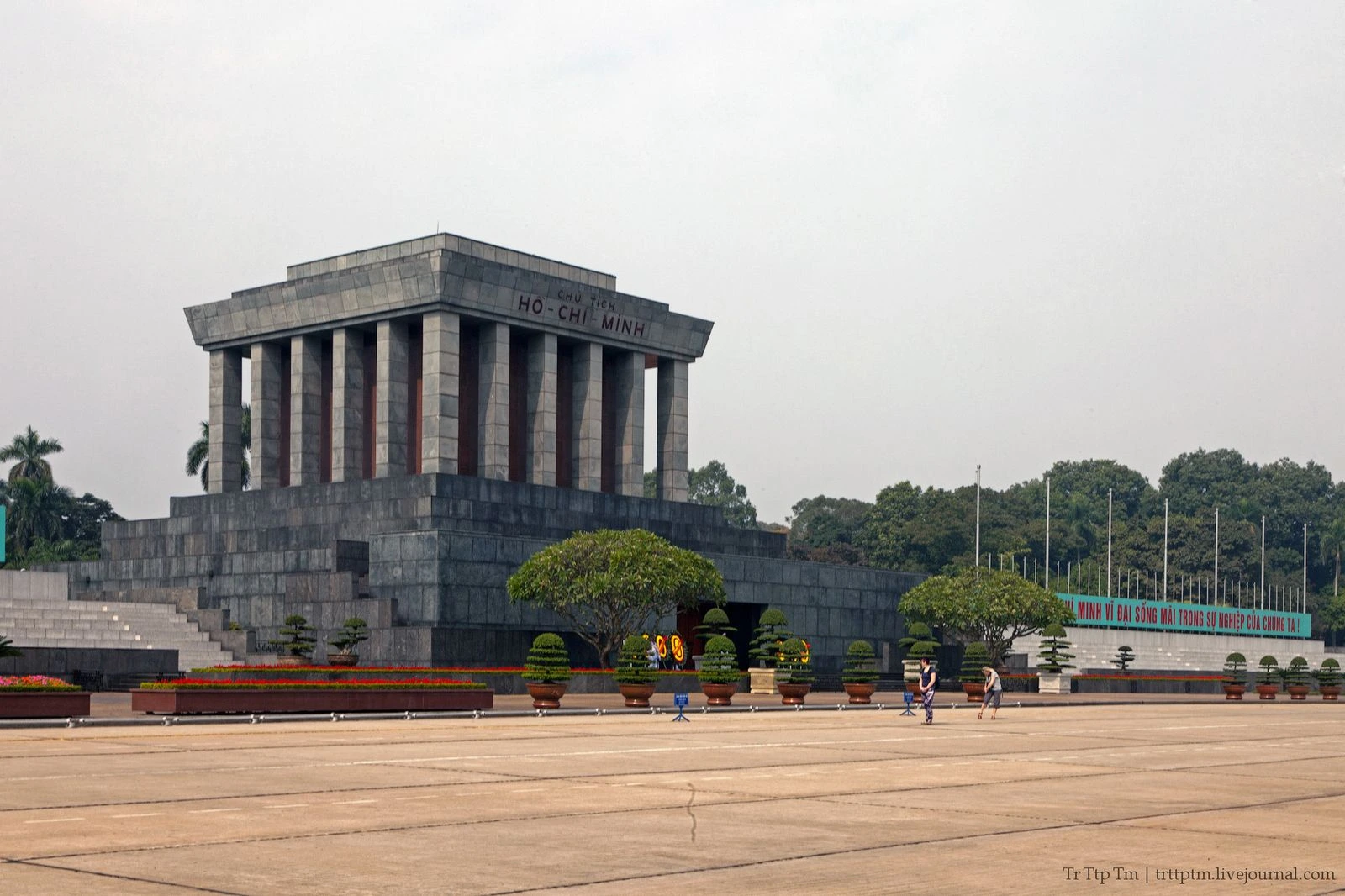
The park near the temple idol recent history of a monument comes back again to the times of Li Thai To - the One Pillar Pagoda.
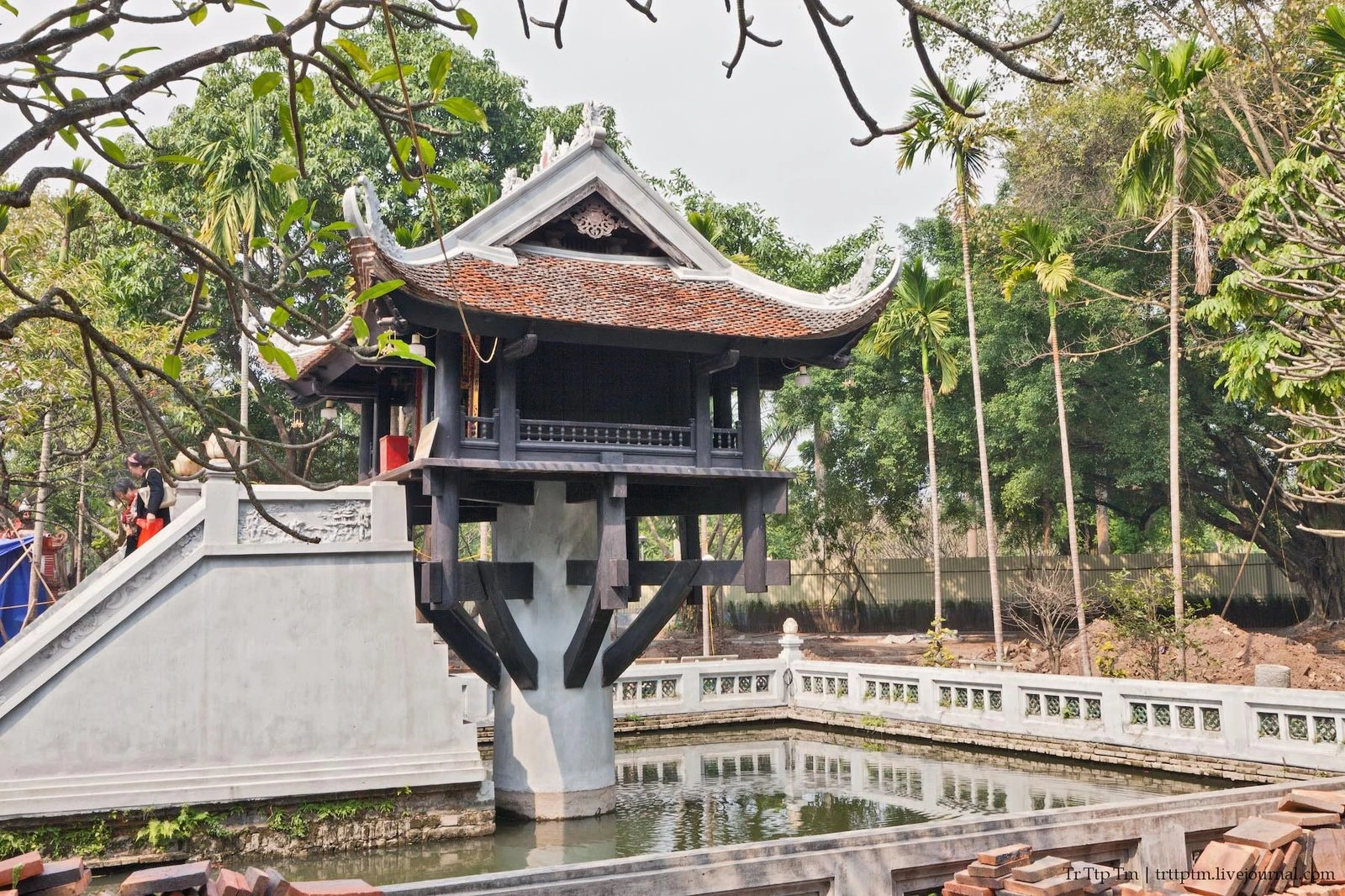
The northern edge of Ba Dinh district goes to the shores of lakes and Trukbach Hotei.
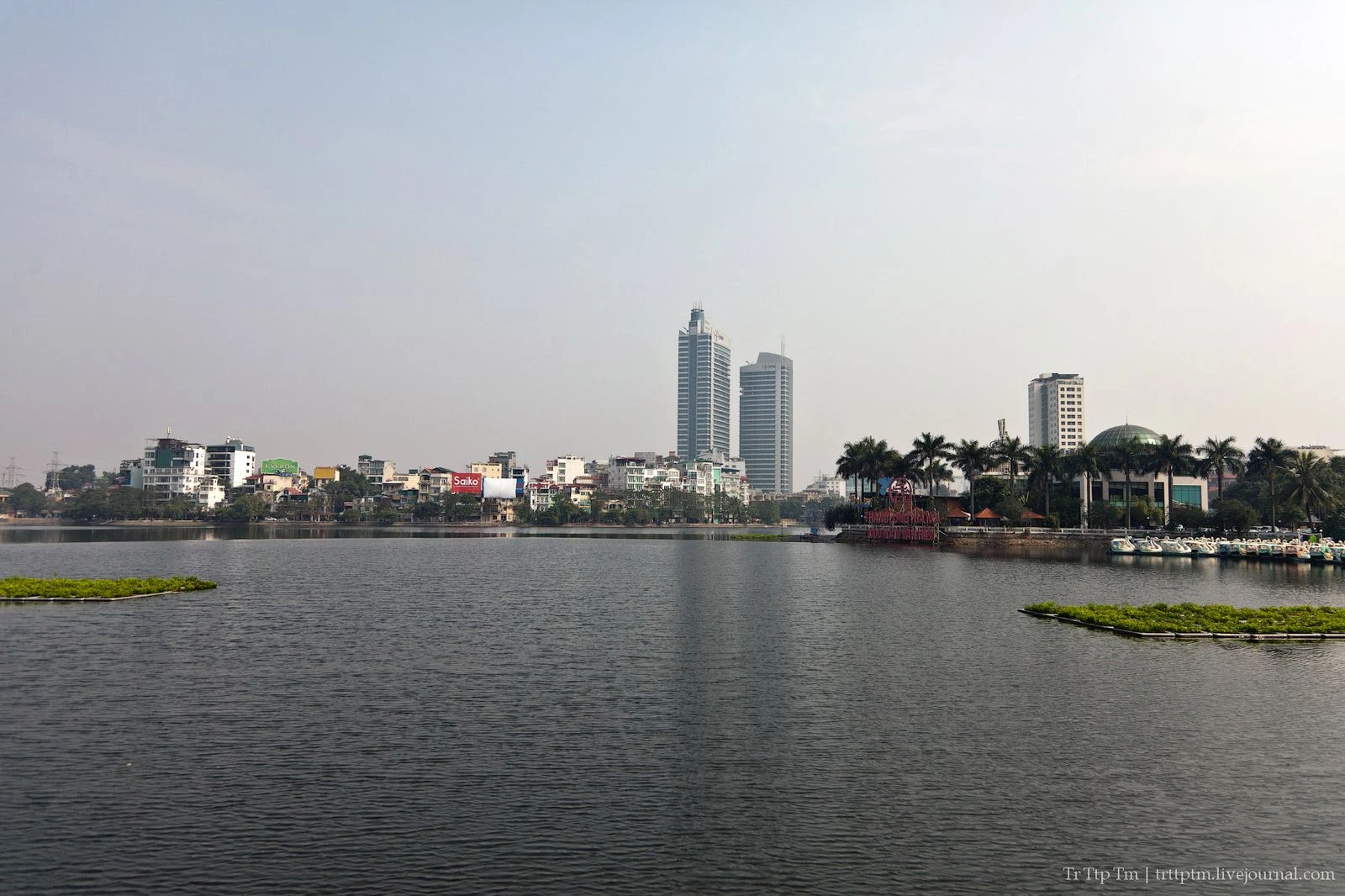
On the island of gold fish in the lake Tran Quoc Pagoda located Hotei.
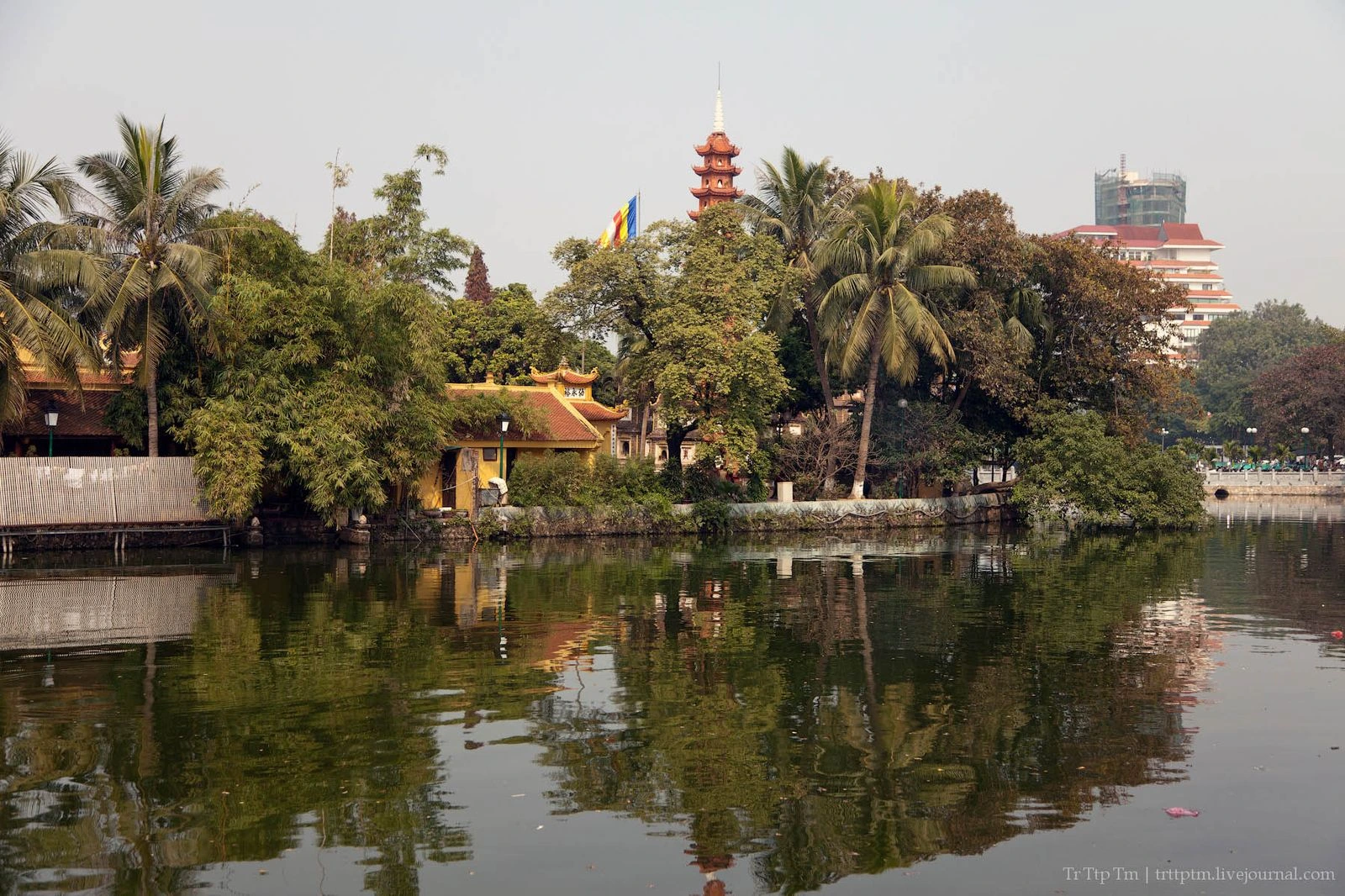
Temple that over five hundred years in the city, still in effect today.
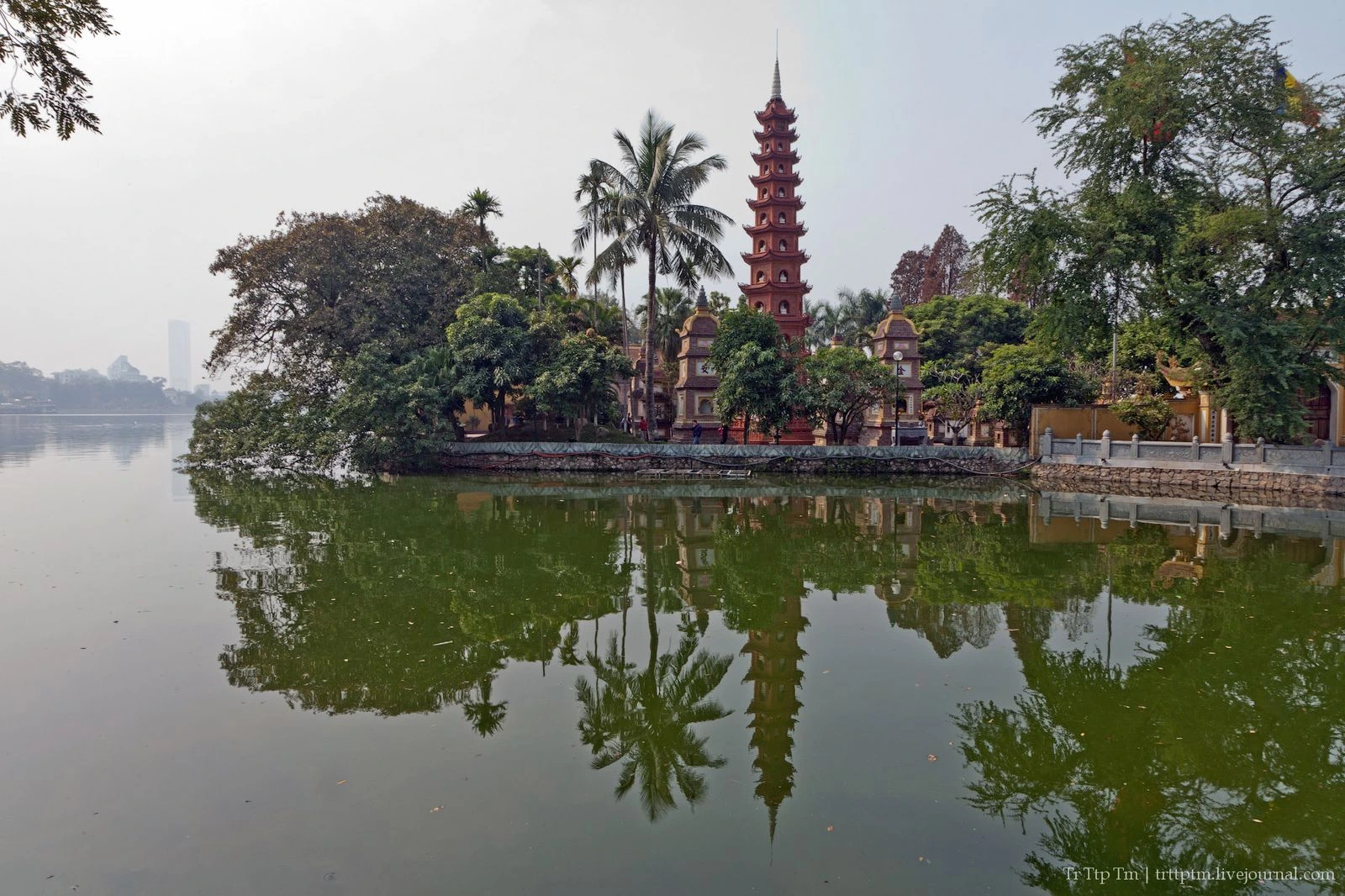
Tran Quoc, an island of peace among the hustle and bustle of old Hanoi. There just rushing water, spices and smoked puchat eyes of valyazhnye pond fish.
